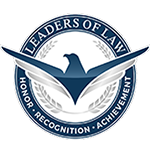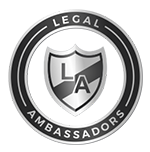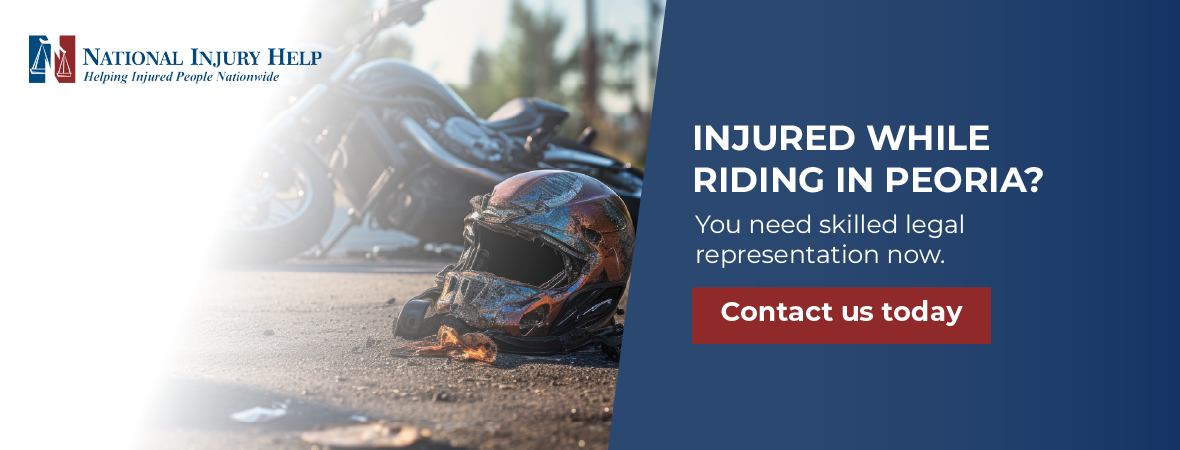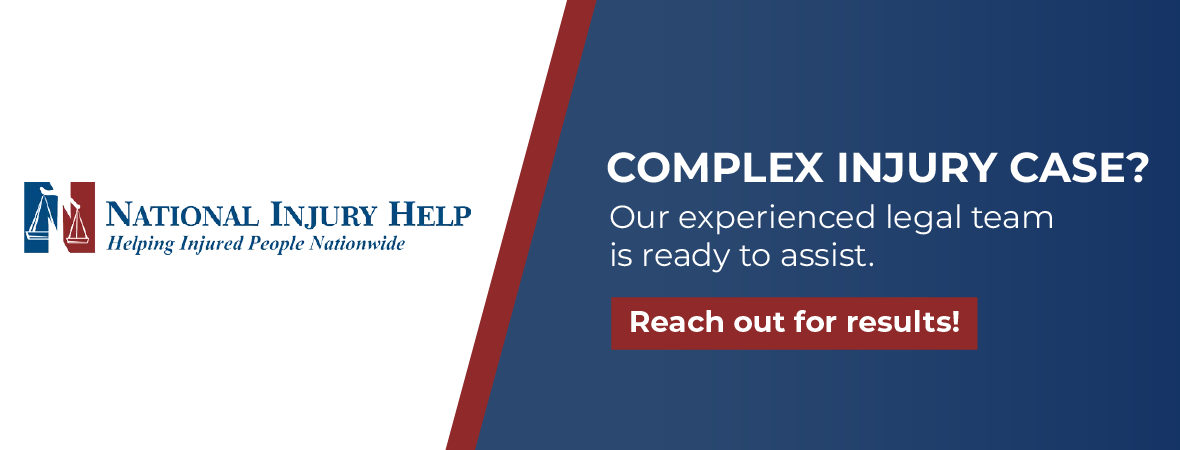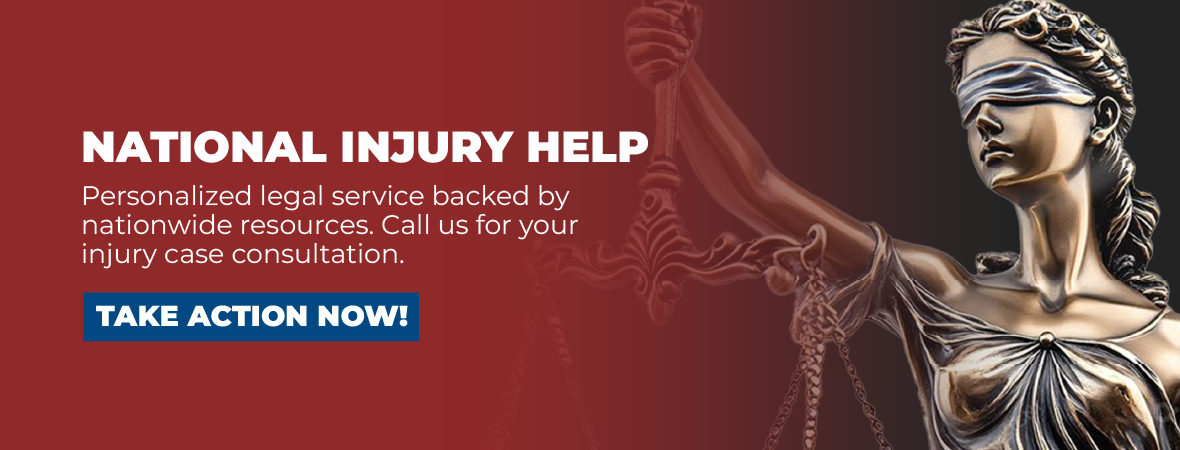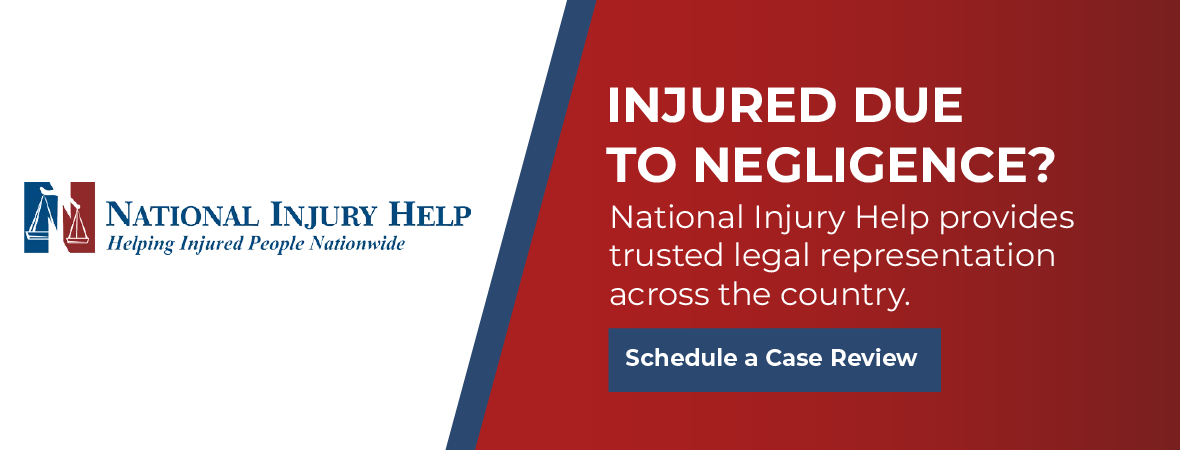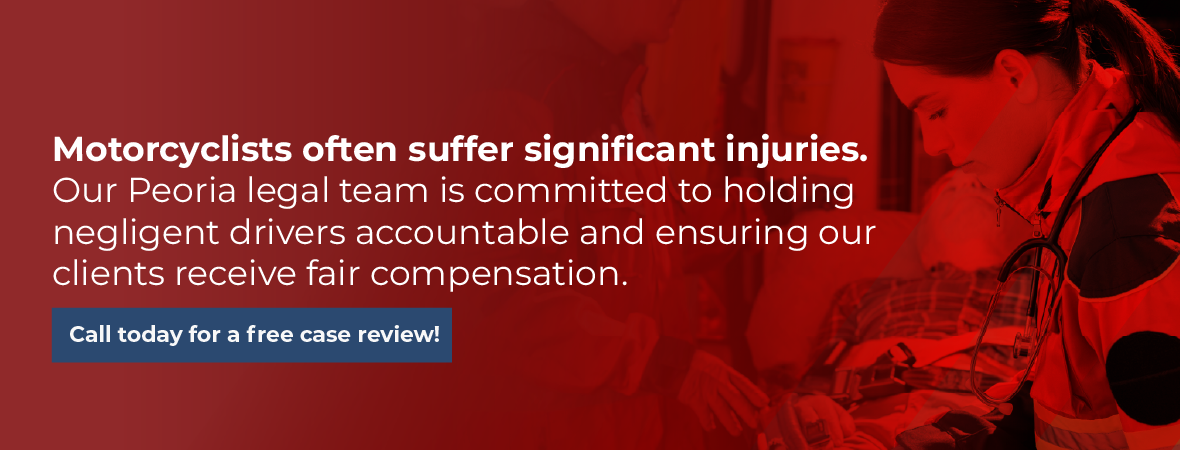Motorcycle accidents in Peoria often lead to serious injuries. A motorcycle accident lawyer can help you get compensation for medical bills and lost wages. Contact National Injury Help by calling 1 (800) 214-1010 today; we’re dedicated to fighting for your rights and assisting with your recovery.
Ash-colored mountains frame the edges of Peoria, and Grand Avenue slices east to west like an open invitation for a ride. You lean into a gentle curve, feel the desert air on your jacket, and trust the cars around you to respect your lane. Then a driver cuts left without warning. Metal collides with metal. Skin meets asphalt. Sirens replace engine noise. In moments like these, you realize how exposed riders truly are. A motorcycle offers freedom, yet it offers little protection in a crash.
After the ambulance leaves, a new set of challenges appears. Insurance adjusters study your helmet, your speed, even your tattoos, searching for reasons to blame you rather than the driver who pulled across your path.
They may ignore medical bills, downplay pain, and argue that riding is always risky, so payouts should be smaller. These tactics feel unfair because they are unfair. Arizona law gives motorcyclists equal status with every other motorist on the road. The same rules that shield drivers also shield riders, and those rules form a solid base for a legal claim. Standing on that base, a skilled Peoria motorcycle accident lawyer can push back against bias and fight for your health, your rights, and your financial future.
This guide walks you through the most important ideas you need to protect yourself. We will cover common causes of crashes in Peoria, key Arizona laws riders must know, the injuries we see most often, and the wide range of damages you can recover.
We will also explain who may be liable, what steps you should take at the scene and afterward, and how an attorney builds a strong case. By the final section, you will understand how much power you still hold, even when a collision has turned your life upside down.
Peoria Motorcycle Accident Lawyer Explains Arizona Motorcycle Laws Every Rider Should Know
Knowledge of state statutes prepares you to claim your rights with confidence and to counter mistaken claims from police officers or insurance representatives. Five legal areas come up most often in Peoria accident cases.
Helmet Laws
Arizona requires riders and passengers under 18 years old to wear DOT-approved helmets. Adults may ride without helmets, yet doing so impacts only injury severity, not legal liability. Insurers sometimes argue that helmetless riders share fault for head injuries, but the absence of a helmet does not erase a driver’s duty to avoid collisions.
Lane Filtering (A.R.S. §28-903)
Arizona allows riders to filter when traffic is stopped, the road has at least two lanes in the same direction, and the rider travels no faster than 15 miles per hour. Filtering remains illegal on highways with higher limits and when traffic moves. These precise rules matter. A driver who swerves without signaling into a filtering rider likely bears fault. A rider who filters at 25 miles per hour risks a share of liability.
Equipment Requirements
Motorcycles must have one rearview mirror, at least one headlamp, and functional tail and brake lights. Turn signals are required on bikes built after 1972. Exhaust noise limits also exist. Police sometimes cite equipment issues after a crash. A missing mirror may not cause an accident, but it can become a distraction if raised at trial. Knowing the requirements keeps attention on where it belongs: driver negligence.
Comparative Negligence
Arizona follows pure comparative negligence. If you are partly at fault, you can still recover damages reduced by your share of blame. For example, if a jury assigns you 20 percent fault for slight speeding, you still collect 80 percent of your losses. This rule rewards quick evidence collection to push your percentage down.
Statute of Limitations
You have two years from the crash date to file a personal injury lawsuit. Claims against a city or county require a formal notice within 180 days. Filing earlier protects evidence and shows insurers you are serious.
Devastating Injuries Common in Motorcycle Accidents
Bike crashes tend to expose skin and twist limbs. Medical charts from Banner Boswell or Abrazo Surprise Hospitals list similar injuries again and again. Five categories appear most often.
Traumatic Brain Injuries (TBIs)
Even with a helmet, a quick stop can send the brain forward inside the skull, then rebound backward. Concussions, contusions, and diffuse axonal injuries disrupt memory, mood, and balance. Low-speed crashes can still force the head into pavement or a windshield. Long-term effects include headaches, focus problems, and emotional swings.
Spinal Cord Injuries and Paralysis
When a rider flies over the handlebars, the spine takes immense force. Fractures at the neck level can paralyze the whole body, while lower breaks can paralyze the legs.
Swelling alone may cause temporary paralysis that becomes permanent if oxygen does not reach nerves in time. Lifetime medical costs run well into seven figures.
Road Rash and Soft Tissue Injuries
Sliding across asphalt shreds multiple layers of skin. Severe cases expose muscle and bone, demanding skin grafts and months of sterile dressing changes. Even a mild rash carries infection risk and can leave permanent scars that tighten and restrict movement.
Broken Bones and Amputations
Ankles and legs often get crushed between the bike and a car, while wrists fracture when riders brace for impact. Compound fractures break skin and raise infection risk. In worst cases, doctors must amputate a mangled limb to save the rider’s life. Prosthetics bring added cost and lengthy rehabilitation.
Emotional Trauma and PTSD
Pain, flashbacks, and survivor’s guilt affect many riders after severe crashes, especially if a passenger or another motorcyclist died. Post-traumatic stress can lead to insomnia, anxiety, and avoidance of riding or even driving at all. Mental health treatment forms a key part of recovery.
Peoria Motorcycle Accident Lawyer Explains The Matter of Liability in a Motorcycle Accident Case
One careless driver might cause the wreck, yet other parties often share blame. Identifying each defendant adds more insurance coverage and raises the chance that all medical bills and lost income will be paid.
Negligent Drivers
A texting driver, a drunk driver, or a driver who fails to yield sits first in line for liability. Their personal auto policy usually forms the initial source of compensation.
Commercial Vehicle Operators or Employers
Delivery trucks, HVAC vans, and rideshare drivers pack Peoria roads. When an on-the-clock employee causes an accident, the employer can be liable for poor training, pressure to meet schedules, or negligent hiring. Corporate policies often carry higher limits than personal policies.
Government Entities
Local governments maintain roads, signals, and signage. Potholes near construction on 75th Avenue or faded lane markers on Thunderbird Road may create hazards. If poor maintenance or design contributed, the city or county may owe damages. Filing deadlines are shorter, so quick action is vital.
Motorcycle Manufacturers
A sudden brake failure or tire blowout can toss a rider off the bike. Product liability claims target manufacturers when design defects or manufacturing flaws cause crashes or worsen injuries. These cases rely on mechanical experts and detailed part inspections.
Multiple Party Liability
Crashes often involve both a negligent driver and a dangerous road. A claim can name several defendants who then argue over their percentage of blame. Skilled legal counsel navigates this multi-party field and collects from each insurance carrier in turn.
Compensation You Can Recover After a Motorcycle Accident
Financial recovery aims to make you whole. That means covering current losses and forecasting future needs.
Medical Expenses
Emergency room care, surgeries, imaging scans, hospitalization, physical therapy, occupational therapy, pain management, prescription medication, mobility aids, and ongoing specialist visits all fall under medical costs. Future treatments such as spinal fusion or skin graft revisions are also compensable when experts provide estimates.
Lost Wages and Future Earnings
Time away from work drains savings fast. If injuries force part-time hours or a lower-pay position, the income gap multiplies over the years. Economists calculate lost earning potential based on your age, career path, and projected raises.
Pain and Suffering
The law recognizes more than economic loss. Chronic pain, daily discomfort, insomnia, anxiety, and diminished joy carry value. Settlements include compensation for these non-economic harms, often using medical records and personal journals as evidence.
Property Damage
Repair or replacement of your motorcycle, helmet, riding jacket, gloves, boots, and any electronics, such as a mounted camera, are included in property damages. Custom parts and upgrades deserve full valuation, not just book value.
Wrongful Death Benefits
If a rider dies, the surviving family may claim funeral costs, lost household income, loss of companionship, and loss of guidance for children. Arizona limits the pool of eligible claimants to spouses, children, parents, and estate representatives.
How a Peoria Motorcycle Accident Lawyer Can Help You
Legal support turns scattered facts into a cohesive story that persuades insurers, judges, and juries.
Investigate and Reconstruct the Crash
A strong claim begins with a deep investigation.
- Visit and document the scene: We go to the exact location of your crash, whether a busy intersection or winding rural road. We measure skid marks, photograph roadway features, record signage and lighting, and note any blind spots or poor paving. Every detail matters in understanding how the accident happened.
- Download event recorder data: Many vehicles, including cars and motorcycles, contain event data recorders (EDRs) that log speed, braking patterns, throttle position, and more. We request this data through subpoenas and analyze it to support a physics-based reconstruction of the crash.
- Check traffic camera and surveillance footage: We look for tapes covering your crash area, intersection cams, gas station cameras, or store surveillance. These videos often capture key events like vehicle positions, skid patterns, or traffic light status.
- Work with accident reconstruction experts: We engage specialists who use data, measurements, and simulation software to model the collision. They calculate speed, stopping distances, angles of impact, and animations that visually demonstrate what happened. These animations make the physical science of the crash easy to understand for adjusters, mediators, judges, or juries.
All this work builds a solid factual foundation, showing exactly how and why the crash occurred.
Prove the Other Party’s Negligence
Motorcyclists often face biased assumptions. Other drivers may claim your bike came “out of nowhere” or suddenly changed lanes. Your lawyer counters this with objective proof and expert analysis.
- GPS data and loyalty: If you use a ride app or record routes on your phone, GPS logs can show your speed and route before the crash. We can also introduce data from fitness trackers or GoPro devices to support your case.
- Witness testimony: We interview people at the scene, drivers, passersby, and passengers, while their memories remain fresh. Their statements often support your narrative, confirming your lane position, signal use, or behavior before the collision.
- Expert testimony: Traffic engineers or vision experts help explain why drivers sometimes don’t notice motorcycles. These specialists can discuss stopping distances, blind spots, and driver perception angles, addressing the common myth that motorcycles are invisible.
- Show visibility conditions: We document weather and lighting conditions that could have hidden your bike that evening, as well as glare, dusk, or dirty windshields, all of which matter.
When bias meets detailed evidence, your lawyer builds a clear case for your right to compensation.
Handle the Insurance Companies
Insurance adjusters are trained to save money. Even with strong evidence, they may delay, dispute, or undervalue your claim.
Your lawyer becomes your buffer and advocate.
Daily calls? We take them for you.
Requests for recorded statements or medical releases? We handle those carefully.
Early settlement offers that barely touch costs? We negotiate from your side, not theirs.
We set firm deadlines. We refuse vague denials. We demand written case reviews and evidence. Every communication stresses your readiness to litigate if necessary. That kind of pressure leads adjusters to raise their offers.
Negotiate Settlements or Take the Case to Trial
Negotiation is often the fastest path to recovery. But insurance companies respect preparation and readiness.
- Presenting the full value of your case: Once we have collected medical records, treatment summaries, expert reconstructions, and witness statements, we send the insurance company a demand package. It outlines every cost, past and future, alongside expert and factual support.
- Battle with evidence, not emotion: We avoid vague emotional appeals. Instead, we present numbers and facts. A broken femur from a motorcycle crash doesn’t “hurt”; it costs $50,000 in treatment, six months of lost income, and long-term care requirements. Medical details and economic projections persuade insurers to pay more.
- Transitioning to litigation: If the insurer offers an unreasonably low settlement, we file suit in Maricopa County Superior Court. We draft a clear, persuasive complaint and meet all court deadlines. This formal step shows we are serious.
- Discovery and depositions: During discovery, both sides gather documentation. We request traffic records, maintenance files, employment information, and more. Depositions let us question the at-fault driver, company officials, or witnesses under oath. Their answers often reveal contradictions and strengthen your case.
- Enforcement through trial readiness: As the trial date approaches, each side reevaluates whether to settle. Insurance companies often increase offers to avoid courtroom risk. If the settlement still fails, the trial begins. With jury selection, opening statements, evidence presentation, expert testimony, and closing arguments, we present your story fully, visually, medically, and legally. A favorable verdict delivers vindication and compensation.
Work on Contingency
One of the most important benefits of working with a motorcycle attorney is financial protection.
No upfront fees. You do not pay anything to retain us. All case preparation, investigation, and expert fees are advanced by the firm.
We only get paid if you do. Our fee is a percentage of your settlement or verdict.
You take no risk. If we don’t win, you pay nothing.
This model removes every barrier between you and experienced legal help. You don’t have to worry about hourly billing while managing medical bills and recovery. Instead, we focus on securing the best outcome for you.
FAQs About Motorcycle Accident Claims in Arizona
Can you recover compensation if you were not wearing a helmet?
Yes, you can recover compensation if you were not wearing a helmet; although insurers may argue helmet use would have reduced head injuries, you can still claim damages under Arizona law.
What if the other driver fled?
If the other driver fled, uninsured motorist coverage can step in, and police may trace the vehicle through witness reports or traffic cameras.
Will your own motorcycle policy cover your injuries?
Whether your own motorcycle policy covers your injuries depends on your medical payments and uninsured motorist limits. A lawyer reviews all available policies to layer coverage when possible.
How long do claims take?
Minor injuries may settle in six months. Complex cases with surgery and future cost projections may take a year to eighteen months. Trial schedules can extend that timeline.
What if the crash was partly your fault?
Arizona comparative negligence reduces your award by your fault percentage but does not bar recovery unless you are found 100 percent at fault.
Contact Peoria Motorcycle Accident Lawyer Today
Motorcycle accidents often lead to serious injuries, and riders are rarely at fault. If you were hit by a distracted or careless driver in Peoria, you do not have to go through this alone. At National Injury Help, we are ready to stand by your side and fight for the compensation you need to heal and rebuild.
Motorcyclists are especially vulnerable to road hazards and driver negligence. Even a minor mistake by a car or truck can send a rider to the hospital. Common causes include unsafe lane changes, failure to yield, and left-turn accidents at intersections. These cases demand immediate attention because evidence can disappear quickly.
Our legal team understands motorcycle crashes and knows how to push back when insurers try to blame the rider. We collect black box data, dashcam footage, and witness accounts to show exactly what happened. We also work closely with medical experts to fully understand how your injuries will affect your future.
You should not face a mountain of medical bills or lost income without help. That is why we offer free consultations and charge no legal fees unless we win your case. Whether the crash happened in central Peoria, on the Loop 101, or near your neighborhood, we are ready to help.
If you’ve suffered a motorcycle injury in AZ, call 1-800-214-1010 today to speak directly with a biker crash attorney in Peoria. We will answer your questions, guide you through your options, and take fast action to protect your rights. Let us handle the legal fight while you focus on recovery.


